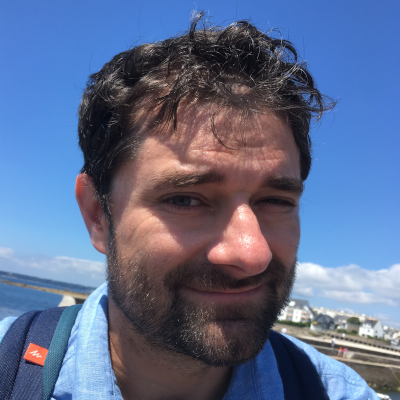
Pr. Jonathan Weber, PhD in Computer Science
Full Professor @ Université de Haute-Alsace
Lecturer @ ENSISA
Keywords
- Deep Learning
- Time series classification
- Data Science
- Image processing
- Mathematical morphology
- Pattern Recognition
Latest news
July 2023: Article accepted in Knowledge and Information Systems.
June 2023: Website of MSD research group is online !
May 2023: New paper on ArXiv about classifier comparison.
May 2023: I went to ORASIS 2023 in Carqueiranne.
May 2023: I presented Romain Wenger work at JURSE 2023 in Heraklion.
March 2023: Dr. Romain Wenger defended his PhD, congrats !
January 2023: Bruno Côme started his PhD in our group !
November 2022: I gave lectures at UFAZ about object programming in Python.
October 2022: Ali El Hadi Ismail Fawaz started his PhD in our group !
July 2022: Dr. Tsegamlak Terefe Debella defended his PhD, congrats !
January 2022: Dr. Mounir Bendali-Braham defended his PhD, congrats !
November 2021: I gave lectures at UFAZ about object programming in Python.
September 2021: Dr. Baptiste Lafabregue defended his PhD, congrats !
February 2021: Paper accepted in Machine Learning with Application !
January 2021: Habilitation à Diriger des Recherches defended !
September 2020: Dr. Hassan Ismail Fawaz defended his PhD, congrats !
September 2020: Paper accepted at ICTAI 2020 !
July 2020: Paper accepted in Data Mining and Knowledge Discovery !
July 2020: Paper accepted at DocEng 2020 !
May 2020: Paper accepted at TPDL 2020 !
April 2020: Paper accepted at CBMS 2020 !
March 2020: Papers accepted at IJCNN 2020 and CEC 2020 !
March 2020: Speaker at Workshop: Hands-on Machine Learning Applied to Medical Imaging
March 2020: I gave a talk about Deep Learning at École de Printemps IDHN
January 2020 : We organize APTA : a workshop on Deep Learning at EGC 2020
November 2019 : Start of Romain Wenger PhD Thesis !
November 2019 : Kick-Off of AiCOLO project
October 2019 : Mi-Edge project funded by ERACoSysMed on glioblastoma early relapse risk!
October 2019 : Start of Robin Heckenauer PhD Thesis !
September 2019 : Dr. Bastien Latard defended his PhD, congrats !
July 2019 : Papers accepted at IJCARS, ISPA 2019 and MACLEAN 2019 !
April 2019 : Paper accepted in Artificial Intelligence Review !
April 2019 : Scientific stay at MH-Hannover to work with Prof. Friederich Feuerhake (DAAD Grant) March 2019 : Paper accepted at AIME 2019 !
March 2019 : Two papers accepted at IJCNN 2019 !
February 2019 : Start of Tsegamlak Terefe Debella PhD thesis
January 2019 : Paper accepted in Data Mining and Knowledge Discovery
November 2018 : Grant from DAAD obtained for a scientific stay at MH-Hannover !
October 2018 : Paper accepted at Big Data 2018 !
October 2018 : Start of Baptiste Lafabregue PhD thesis
August 2018 : Paper accepted in Artificial Intelligence in Medicine
July 2018 : Paper accepted at MICCAI 2018 !
November 2017 : Start of Mounir Bendali PhD thesis
October 2017 : Start of Hassan Ismail Fawaz PhD thesis
September 2017 : Paper accepted at ICTAI 2017 !
August 2017 : SYSIMIT meeting at definiens, Munchen
September 2016 : Start of Bastien Latard PhD thesis
September 2016 : New position at Université de Haute-Alsace
June2016 : 16th Festival MMI, Festival of the Web and Multimedia departments (in french)
October 2015 : Debate about Journalism and Artificial Intelligence (in french)
Open positions
- No open position yet
 Polyvalent Extensible Library for Image Computing and ANalysis is a multi-platform framework, written in Java, dedicated to Image Processing. The project started at the Université de Strasbourg in 2005 but its contributors are no longer in this university. It allows the processing of image from different types (2D, video, 3D, 3D+t) and origins (casual, medical, astronomic, remote sensing, ...) and contains many standard image processing algorithms.
Polyvalent Extensible Library for Image Computing and ANalysis is a multi-platform framework, written in Java, dedicated to Image Processing. The project started at the Université de Strasbourg in 2005 but its contributors are no longer in this university. It allows the processing of image from different types (2D, video, 3D, 3D+t) and origins (casual, medical, astronomic, remote sensing, ...) and contains many standard image processing algorithms. Software developped during the ANR-JC ECOSGIL project. Written in Java, it is a tool dedicated to geographers. It achieves several processing on coastal remote sensing images such as the extraction of coastline. It uses the Pelican framework. It is still used by geographers (initial release dated from 2007).
Software developped during the ANR-JC ECOSGIL project. Written in Java, it is a tool dedicated to geographers. It achieves several processing on coastal remote sensing images such as the extraction of coastline. It uses the Pelican framework. It is still used by geographers (initial release dated from 2007). TeSySp (Technical Symbol Spotter) was initially developed to demonstrate our work on
TeSySp (Technical Symbol Spotter) was initially developed to demonstrate our work on